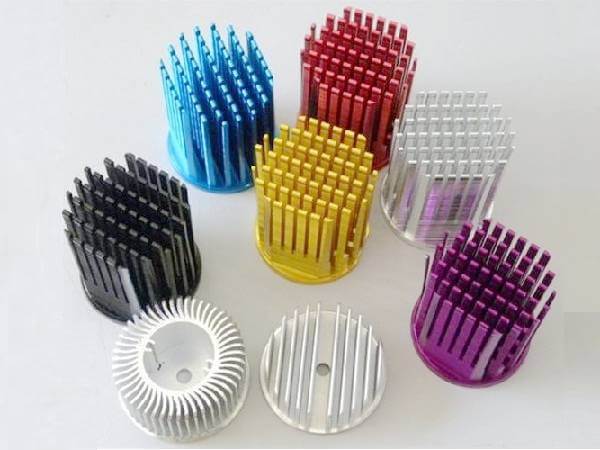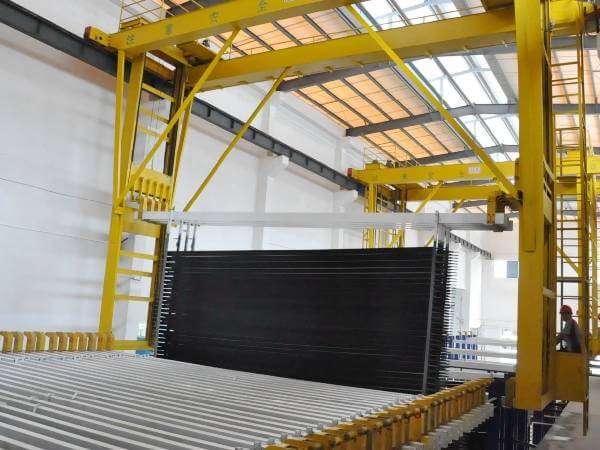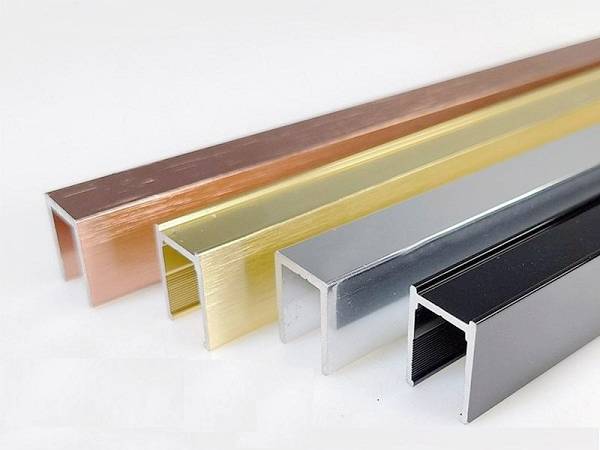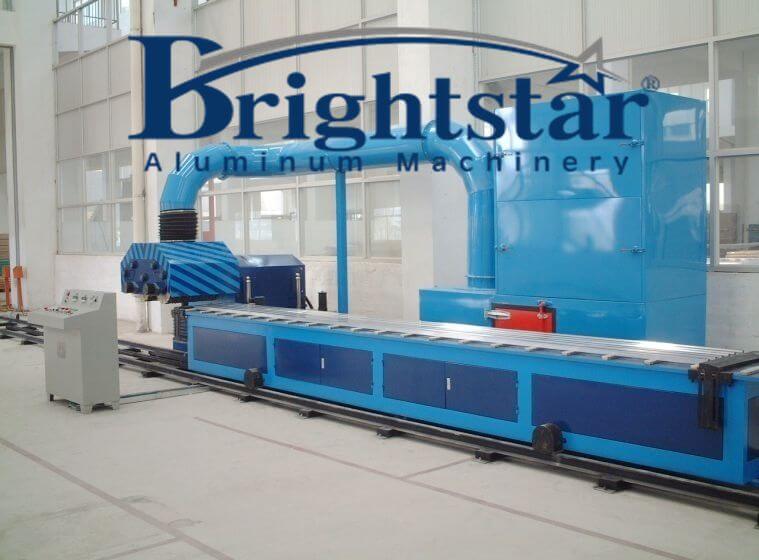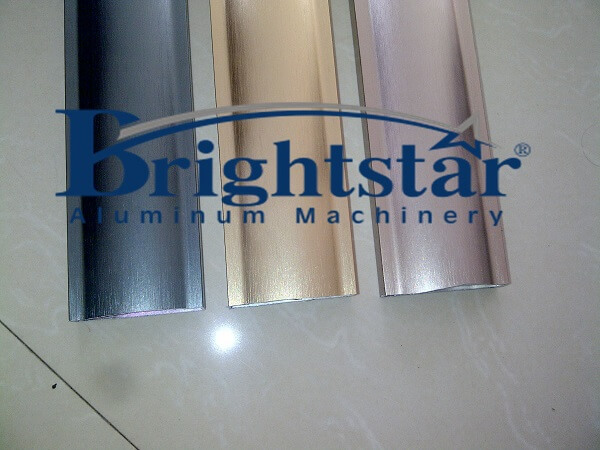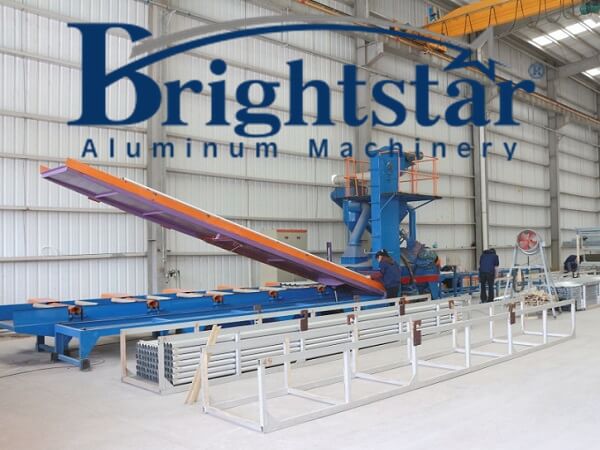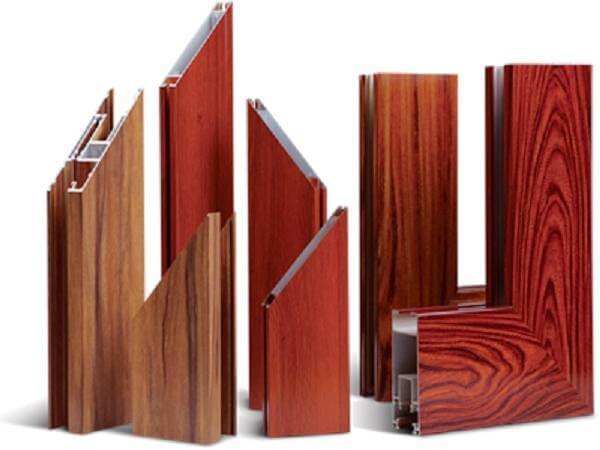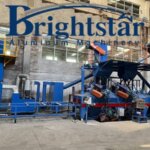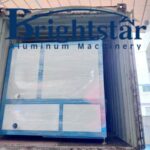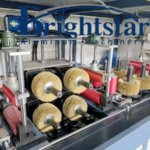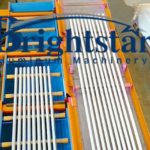Something you need to know about surface treatment of aluminum profile
Something you need to know about surface treatment of aluminum profile
It is treated by mechanical and chemical methods to form a protective layer on the surface of the product to protect the body.
It can reach a stable state in nature, increase the corrosion resistance of the body and increase the beauty of the product, thereby enhancing the value of the product.
The choice of the type of surface treatment should be based on the use environment, service life, and artificial appreciation. Of course, the economic value is also the core of consideration.
The process of surface treatment includes pre-treatment, film formation, and film post-treatment, packaging and storage, shipping and other processes, where pre-treatment includes mechanical treatment and chemical treatment.
Mechanical treatment includes sand blasting, shot blasting, grinding, polishing, brushing, waxing and other processes.
The purpose of mechanical treatment is to remove unevenness on the surface of the product and to remedy other appearance defects on the surface.
Chemical treatment removes the oil and rust on the surface of the product, and forms a layer that can better combine the film-forming substances or form an active metal body, ensure a stable state of the coating, increase the binding force of the protective layer, and achieve the purpose of protecting the body effect.
Chemical pretreatment
1.Alkali etching
This is the most common pretreatment method.
Alkali etching treatment, also known as alkali washing.
The main purpose is to remove the natural oxide film on the surface of aluminum products, obtain a clean aluminum substrate, and activate the surface, otherwise it is difficult to produce a qualified oxide film.
The surface after alkali etching is bright and delicate.
In the past, the alkali etching method was commonly used in my country to eliminate extrusion lines, but this method consumes too much aluminum.
Some factories adopted an AL(OH)3 recovery device, which achieved better results and benefits.
The chemical principle of Alkali corrosion inhibitor, it is the process of etching aluminum and aluminum alloys in alkaline solution.
This alkaline solution can be sodium hydroxide or potassium hydroxide solution, also can be sodium carbonate or sodium phosphate solution, etc.
No matter which solution it is, the most basic premise is that this alkaline solution can have a strong corrosion effect on the surface of aluminum and aluminum alloy to remove impurities on the surface of aluminum alloy.
There are two corrosion processes for aluminum alloy materials in sodium hydroxide solution, namely, the dissolution of the natural oxide film on the surface of the aluminum material and the corrosion and dissolution process of the aluminum substrate.
As the concentration of aluminum ions in the solution increases, sodium metaaluminate will be hydrolyzed to form aluminum hydroxide precipitates.
The role and selection of alkali etching agent
Alkali etching is a very important step in the pre-oxidation treatment of aluminum, and this step is indispensable.
Otherwise, it will affect the next operation and lead to the incompleteness of the final workpiece.
⭐As a supplementary treatment after the product has been degreased by some degreasing methods, the surface of the aluminum alloy is further cleaned to further remove the oily dirt that has penetrated into the surface of the aluminum substrate;
⭐Remove the passivation layer, natural oxide film and slight scratches on the aluminum alloy surface by alkaline etching, exposing the fresh aluminum substrate, which is conducive to the formation of anodic film and obtains a higher quality film;
⭐ The corrosion of aluminum is very severe during alkali corrosion, and a large amount of hydrogen gas will be generated during the corrosion process, which is conducive to the removal of insoluble impurities in aluminum alloys, such as sand remaining on the surface of aluminum alloy after sandblasting and residue on the surface of aluminum alloy after wire drawing Aluminum shavings, etc.;
⭐ Over-alkaline etching can change the texture of the aluminum alloy surface to a certain extent, and at the same time adjust the gloss of the aluminum alloy surface to achieve the purpose of decorative function.
2.Acid etching
The prototype of this technology existed in the 1950s and 1960s.
Its principle is to use fluorine ions to have a relatively negative electrode potential under acidic conditions to form pitting corrosion on the aluminum surface.
This technology is characterized by low aluminum consumption and uniform surface, but the disadvantage is that the surface is not bright.
Acid etching principle of aluminum alloy profiles acid etching is an organic chemical corrosion under specific conditions.
When the aluminum alloy profile touches the corrosion solution, it will quickly reflect and transform into a complex in a very short period of time.
The reaction equation is given:
3F-+Al-AlF3
6F-+Al3+-Al.F63
-AlF63-+Al2O3.3H2O-Al3(OH )3F6+30H-
Converted complex and has a certain viscosity (viscosity), very easy to adhere to the surface of aluminum chemical reaction (Chemical reaction) to produce this original film.
3.Chemical polishing
Chemical polishing is a chemical processing method that uses the selective self-dissolution of aluminum and aluminum alloys in acidic or alkaline electrolyte solutions to level and polish the surface to reduce its surface roughness and PH.
This polishing method has the advantages of simple equipment, no power supply, no restriction on the size of the workpiece, high polishing speed and low processing cost.
The surface of chemical polishing can easily achieve the mirror effect, and because of the consistency of the decorative surface and the non-decorative surface, the grade of aluminum is improved.
Technical problems are not easy to solve (such as bath heat preservation, bath aging, etc.) At the same time, the essence of chemical polishing should be called chemical brightening method, because this method can indeed make the surface of aluminum bright.
But it cannot remove extrusion lines, marks and scratches will be more visible after chemical polishing.
As a specialist of aluminum profile polishing machine, our recommendation is mechanical polishing first, then chemical polishing for mirror effect aluminum profiles.
Mechanical pretreatment
1.Mechanical polishing
Mechanical polishing is a method of achieving a smooth finish on aluminum surfaces through mechanical movement.
Usually use aluminum profile polishing machine, cloth wheel, polishing wax and other tools to remove the scratches and burrs on the aluminum surface through grinding and polishing, and then use the polishing wheel for mechanical polishing to make the aluminum surface achieve a higher finish.
Mainly use the polishing wheel coated with polishing wax to process the surface of the aluminum alloy profile, which can reduce the roughness of the surface of the aluminum alloy profile, make the surface smooth, obtain a bright or mirror effect, and can effectively repair the scratches on the surface of the aluminum alloy profile scratches.
Although the mechanical polishing of aluminum profiles can achieve the effect of smooth surface, it does not meet the requirements of smoothness.
The mirror effect cannot be achieved after mechanical polishing, mechanical polishing can be performed before chemical polishing or electrochemical polishing.
Scratches and other surface defects on the surface of aluminum profiles cannot be removed by direct chemical polishing without mechanical polishing.
Therefore, it is necessary to achieve a better mirror effect on the surface of the aluminum material, and at the same time have better wear resistance and corrosion resistance, so first mechanical polishing, then chemical or electrochemical polishing, and finally bright dipping anodizing process.
Aluminum profile polishing machine
2.Brushing
Aluminum profile brushing refers to grinding the surface of aluminum through high-speed rotating brushes or wheels to achieve the effect of producing fine textures.
The significance and application of aluminum profile brushing
Improve the appearance and texture of aluminum
Through the brushing treatment, the surface of the aluminum material produces a uniform, beautiful, and textured texture, which transforms the cold feeling of ordinary aluminum into a warm and friendly feeling.
In addition, under the sunlight, the texture changes can also bring colorful reflection effects, bringing a unique visual beauty to buildings and homes.
Enhance the wear resistance and corrosion resistance of aluminum
After the aluminum material is brushed by aluminum profile brushing machine, fine textures are produced on its surface.
These textures can increase the friction of the aluminum material and improve the wear resistance and corrosion resistance of the aluminum material.
In addition, the addition of chemical agents such as oxidants can also form a certain oxide film on the surface of the aluminum material, further enhancing the corrosion resistance of the aluminum material.
Widely used in construction, home furnishing and electronics and other fields
Due to the beautiful surface, strong wear resistance and good corrosion resistance of aluminum after brushing, it has been widely used in the fields of construction, home furnishing and electronics.
For example, in the field of construction, brushed aluminum profile is often used to decorate doors, windows, curtain walls, etc., giving them a stylish and beautiful appearance.
In the home field, it can be applied to the production of kitchen utensils, furniture, lamps, etc., adding style and comfort to the home environment.
In the field of electronics, it can be applied to the production of components such as battery casings and mobile phone holders.
Development and application prospect of aluminum brushing technology
With social development and scientific and technological progress, aluminum brushing technology is also developing.
At present, in addition to the traditional aluminum brushing process, new aluminum brushing technologies have emerged, such as electrolytic brushing, robot brushing, etc., which have improved the quality and efficiency of aluminum profile brushing and developed more application fields.
It can be predicted that with the continuous improvement of people’s requirements for product appearance, the application prospect of aluminum wire drawing technology will be broader in the future.
3.Shot blasting and sand blasting
Shot blasting is also the name of a mechanical surface treatment process, similar processes include sandblasting and shot peening.
Shot blasting is a cold treatment process, which is divided into shot blasting cleaning and shot blasting strengthening.
Shot blasting, as the name implies, is to remove impurities such as surface scale and improve the appearance quality.
Shot blasting is to use high-speed moving projectiles (60-110m/s) to continuously impact the surface of the strengthened workpiece, forcing the surface and surface layer (0.10-0.85mm).
The following changes occur during the cyclic deformation process:
- The microstructure is modified;
- The non-uniform plastic outer layer introduces residual compressive stress, and the inner surface produces residual tensile stress;
- The outer surface roughness changes.
Effect: It can improve the fatigue fracture resistance of materials/parts, prevent fatigue failure, plastic deformation and brittle fracture, and improve fatigue life.
The principle of shot blasting process
Shot blasting refers to throwing the shot (steel shot) onto the working surface at a high speed and a certain angle by mechanical means, so that the shot hits the working surface at high speed, and the combined effect of the vacuum negative pressure and the rebound force of the supporting vacuum cleaner Next, the pellets circulate in the equipment by themselves.
At the same time, through the airflow cleaning function of the supporting vacuum cleaner, the pellets and the cleaned impurities are recovered separately, and the pellets can continue to be recycled.
Aluminum profile shot blasting machine is equipped with a dust collector to achieve dust-free and pollution-free construction, which not only improves efficiency, but also protects the environment.
Aluminum profiles shot blasting machine
During the operation of the machine, by selecting the particle size and shape of the pellets, adjusting and controlling the walking speed of the equipment, and controlling the projection flow of the shots, different projection intensities and different surface treatment effects can be obtained.
Technical requirements of shot blasting process
During the operation of the shot blasting machine, by controlling and selecting the particle size and shape of the shot, as well as adjusting and setting the walking speed of the machine, the projecting flow of the shot is controlled to obtain different projecting intensities and different surface treatment effects.
The shot blasting process and shot blasting equipment control the surface condition after treatment through three parameters according to the surface to be treated.
Select the size and shape of the shot; the walking speed of the equipment; the flow rate of the shot.
The above three parameters cooperate with each other to obtain different processing effects and ensure the ideal roughness of the surface after shot blasting.
Sand blasting is a process for surface treatment of workpieces
Compressed air is used as the power to form a high-speed jet beam to spray the spray material onto the surface of the workpiece to be treated at high speed, so that the appearance or shape of the workpiece surface changes.
Due to the impact and cutting effect of the abrasive on the surface of the workpiece, the surface of the workpiece can obtain a certain degree of cleanliness and different roughness, so that the mechanical properties of the surface of the workpiece can be improved, thus improving the fatigue resistance of the workpiece, increasing it and the coating adhesion between them prolongs the durability of the coating film, and is also conducive to the leveling and decoration of the coating.
4 Powder coating
Powder coating is to use powder spraying equipment (electrostatic spraying machine) to spray powder coating on the surface of the workpiece.
Under the action of static electricity, the powder will be evenly adsorbed on the surface of the workpiece to form a powder coating.
The powder coating is baked at high temperature.
Bake leveling and curing, and become the final coating with different effects (different types of powder coatings).
The spraying effect of powder spraying is superior to the spraying process in terms of mechanical strength, adhesion, corrosion resistance, aging resistance, etc..
The cost is also lower than that of spraying with the same effect.
It should be said that powder coating is more and more popular with many aluminum factories and mass consumers because of its various colors and less strict requirements on mill finish aluminum materials.
It also satisfies personalized design and chooses colors according to user preferences.
The development and popularization of thermal insulation aluminum profiles has opened up an important space for powder coating profiles, and the appearance of powder coatings is also more diverse.
Wood grain effect aluminum profile refers to the basis of powder coating or electrophoretic coating, according to the principle of high temperature sublimation thermal penetration, through heating, pressure, the wood grain pattern on the wood grain film or wood grain paper, quickly transfer and sublimate into the powder coated or electrophoretic aluminum profiles.
The wood grain effect of aluminum profile is clear and its texture is same as real wood, the three-dimensional sense is strong, and it can better reflect the natural feeling of the wood.
It is an ideal energy-saving and environmentally friendly material to replace traditional wood.
The vacuum wood grain effect sublimation machine allows us to easily make aluminum profiles into wood grain and marble effect.
The current vertical power coating method can even directly spray the wood grain effect with hand feeling.
5.Electrophoretic coating
Electrophoretic coating (electro-coating) is a coating method that uses an external electric field to make the particles such as pigments and resins suspended in the electrophoretic liquid migrate directionally and deposit on the surface of the substrate of one of the electrodes.
Electrophoresis refers to the movement of charged coating ions to the cathode under the anode and cathode, and the alkaline interaction with the surface of the cathode to form insoluble substances, which are deposited on the surface of the workpiece.
Aluminum profile electrophoresis coating process is the process of putting extruded aluminum profiles into a DC battery to form a dense resin film.
The electrophoretic aluminum profile is very bright, has a mirror effect, and also improves corrosion resistance.
Principle of electrophoresis: Electrophoresis is the electrophoretic coating applied to the positive and negative poles.
Under the action of voltage, the charged coating ions move to the cathode, and form insoluble matter with the alkalinity generated on the surface of the cathode, and deposit on the surface of the workpiece.
Four processes:
(1) Electrolysis (decomposition)
The reaction at the cathode is initially an electrolysis reaction, generating hydrogen and hydroxide ions OH.
This reaction causes the formation of a highly alkaline boundary layer on the cathode surface.
When the cation reacts with the hydroxide to become a water-insoluble substance, the coating film is deposited.
The equation is:
H2O→OH+H
(2) Electrophoretic movement (swimming, migration)
Cationic resin and H+
Under the action of an electric field, the negative ions move toward the cathode, while the anions move toward the anode.
(3) Electrodeposition (precipitation)
On the surface of the coated workpiece, the cationic resin reacts alkalinely with the surface of the cathode, neutralizes and precipitates no deposits, and deposits on the coated workpiece.
(4) Electroosmosis (dehydration)
The coating film on the surface of the coating solid and the workpiece is translucent and has many capillary pores.
Water is drained from the cathode coating film.
Under the action of the electric field, the coating film is dehydrated, and the coating film is adsorbed on the surface of the workpiece, and complete the entire electrophoresis process.
Brightstar Aluminum Machinery offers not only aluminum profiles polishing machine, aluminum profile brushing machine, but also aluminum profiles surface defects brushing and cleaning machine, aluminum profile shape corrector and aluminum profile packaging machine, etc.
Turnkey project and one package deal!
Contact us now to obtain a reliable No-obligation quote on aluminum profiles polishing machine, brushing machine, aluminum profiles shot blasting, wood grain effect sublimation machine.
Get A RELIABLE No-obligation Quote

